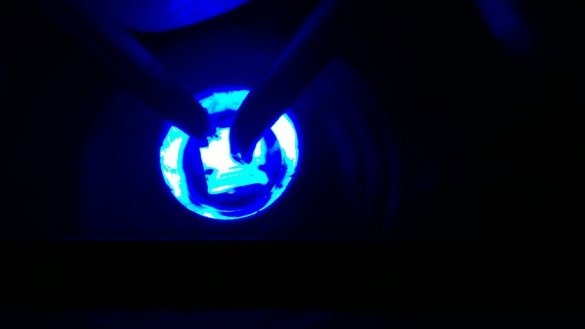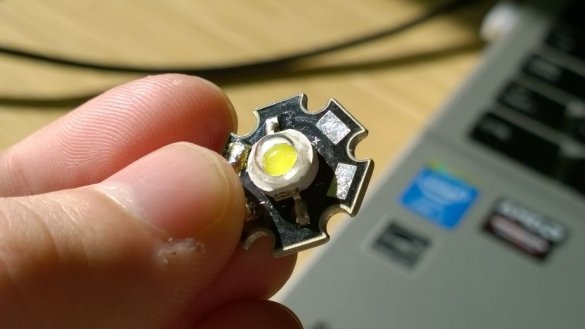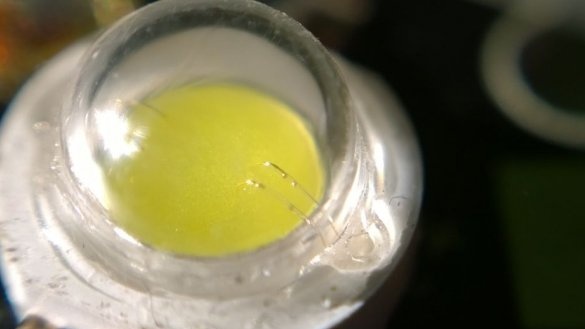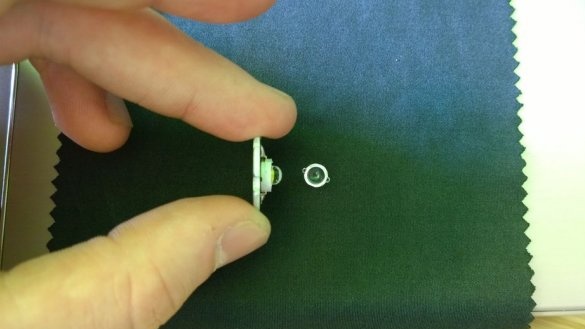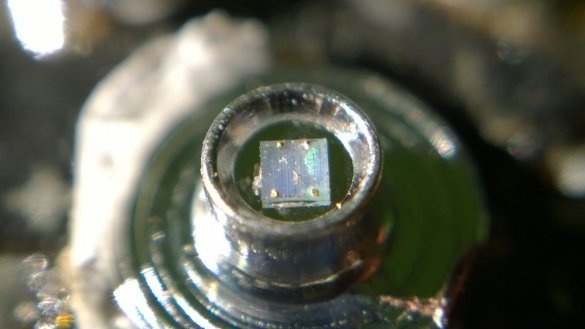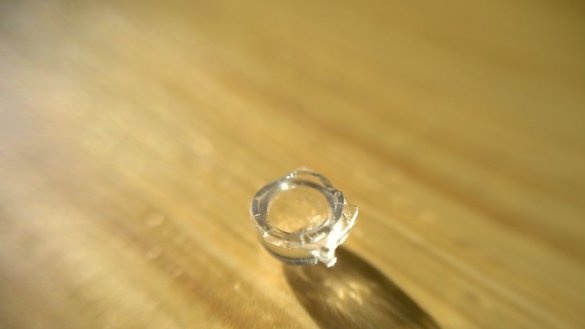The author’s father, Instructables, under the nickname kondzio29, burned two three-LEDs, connecting them directly to the battery of a screwdriver. Of course, he bought new ones, but without heat sinks. The master decided to remove the burnt out LEDs from the heat sinks, then to put new ones there. But the old LEDs were glued with heat-conducting glue, and it was not so easy to tear them out. An overlay with a phosphor flew off from one of the LEDs, and then the master realized that an interesting experiment could be conducted.
The second burned LED master separates from the heat sink as a whole and opens more accurately:
And now the experience itself. The master takes two pins and connects them to a voltage source whose emf exceeds 3 V, but the short-circuit current is limited. This can be, for example, a slightly discharged element CR2025 or 2032, or a power supply unit of several V, in series with which a resistor for a couple of hundred ohms is connected. And attaches the pins to the crystal as shown on the KDPV.
With the correct polarity, the crystal glows dimly in blue. Why blue, it is clear - the phosphor is removed. But why did the crystal light up at all? He burned out. It turns out, no. The crystals burn out in less powerful LEDs, and here one of the thin conductors connecting the crystal to the contact pads worked as a fuse. If you connect a crystal bypassing these conductors, it glows.
Of course, you should not make a pin holder and thereby return the LED to working condition on the recommendation of the wizard. From air, dust, it will soon fail. But the experience was interesting. And more LEDs are better not to spoil.

